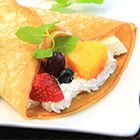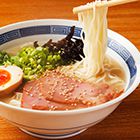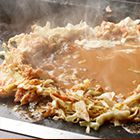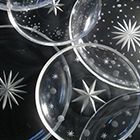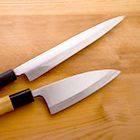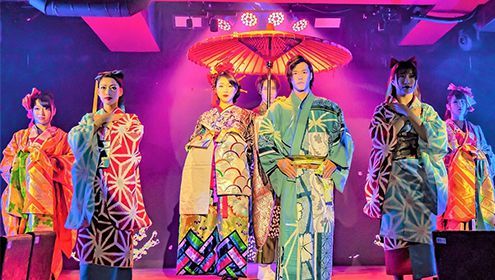
Tokyo bosts many lively shopping/business areas, and Roppongi is a well known example. On weekends you will find bars, clubs and hostess clubs brimming with patrons. In addition to the night life, during the day Roppongi transforms itself into a high-end shopping area. Roppongi is home to Roppongi Hills and Tokyo Midtown, both of which are huge shopping and entertainment complexes offering enough activities to easily occupy visitors for an entire day. On top of all of this, there are areas where nature has been preserved, such as Hinokicho Park and the Mouri Gardens. For those interested in the arts, the Suntory Art Museum, Mori Art Museum and The National Art Center are all within the Roppongi area.
To access Roppongi using public transport, the Tokyo Metro Hibiya Line and Toei Oedo Line are the best options. Both lines stop at Roppongi Station. And if you are visiting by car, the Iikura interchange is the closest entrance/exit from the Toshin Inner Circular Highway.
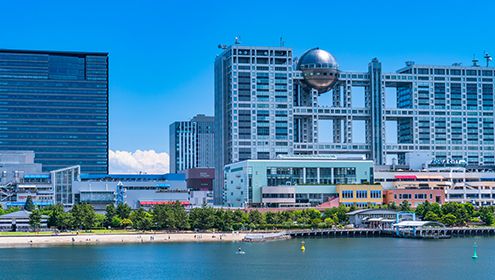
In recent years, Odaiba has been steadily gaining popularity as a tourist destination for shopping, entertainment and cuisine. The replica of the Statue of Liberty is considered the symbol of Odaiba. At the large-scale shopping/entertainment complex Diver City Tokyo Plaza, there is a 1:1 scale Gundam on display. The almost 20 meter tall model of the animated robot is sure to impress Anime fans and non-fans alike.
Odaiba is accessable from various locations within Tokyo by the TOKYO CRUISE water-bus. To get around within Odaiba, the monorail "Yurikamome" is a good option.
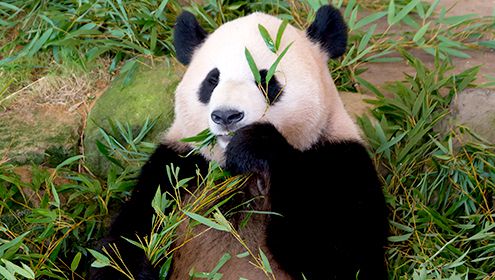
The Ueno Zoo first opened to the public in 1882 as the very first Zoo in Japan. Today, with endangered species such as the Sumatran Tiger and Western Low-land Gorilla among its ranks, the zoo boasts over 400 different species of animals. Annualy, the zoo has the highest number of visitors of any zoo in Japan. The "poster animals" of the Ueno Zoo are most definitely the giant pandas. The Ueno Zoo was also the first zoo in Japan to keep pandas.
By train, the JR East Ueno Station or the Keisei Dentetsu Ueno Station are the closest to the zoo. By subway, the Tokyo Metro Ginza Line and Hibiya Line both stop at Ueno Station. The Toei Subway Oedo Line stops at Ueno Okachimachi Station. The zoo is walking distance from all these stations.
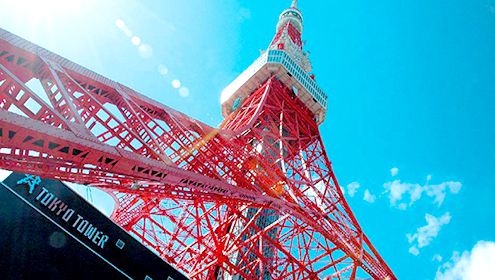
The Tokyo Tower, officially called Nippon Denpato or "Japan Radio Tower" was first completed in 1958. It is 333 meters tall, and in Japan is second only to the Tokyo Sky Tree in height.
If using public transport, Akabanebashi Station on the Oedo line is the closest station to the Tokyo Tower.
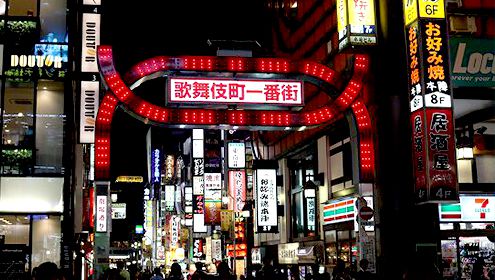
Kabukicho is an area within the Shinjuku district of Tokyo. It is one of the world's greatest entertainment districts and boasts movie theaters, manga cafes, Izakaya, host/hostess clubs, a red light district and pachinko parlours amongst many other stores and facilities. It is often called "the city that doesn't sleep" and is attracting more and more tourists in recent years. In terms of food, you can enjoy sushi, Japanese cuisine, Izakaya, and Chinese and Korean cuisine amongst other options. From cheap fast food to gourmet restaurants where you can spend a small fortune, Kabukicho has it all.
Shinjuku Station is closest to Kabukicho and is accessible by JR East, the Keio Line, Odakyu Line and Tokyo Metro Toei Subway Line.
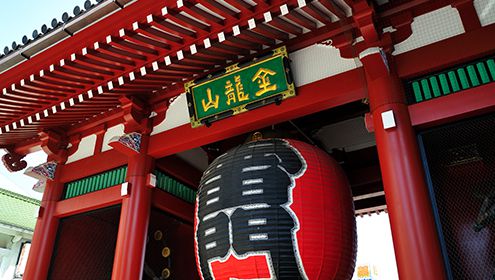
Asakusa is home to Sensoji, the oldest temple in the 23 wards of Tokyo. For many, the gate to Sensoji with the giant lantern bearing the word "Kaminari Mon" comes to mind when Asakusa is mentioned. Nakamise Dori is also known as the oldest shopping arcade in Japan and offers a wide selection of souvenirs for purchase. The five-layerd pagoda and Asakusa Shrine only serve to add to the atmosphere. A must visit if you are sigh-seeing in Tokyo.
Nearby there is also a food-sample specialty store where you will find models of various fish, sashimi, sushi, soba, ice cream, cakes, pasta and many other foods. These food samples that you find in the windows of restaurants in Japan also make for popular souvenirs or gifts.
By train, Asakusa Station on the Tobu Dentetsu Isezaki Line is the closest. By subway, the Toei Subway Asakusa Line or Tokyo Metro Ginza line both stop at Asakusa Station.
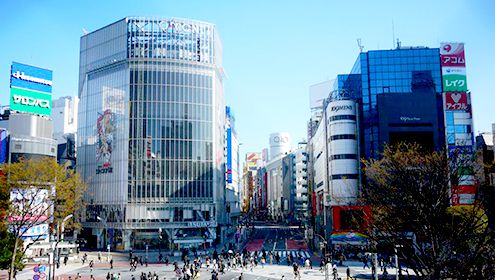
The Shibuya area, unsurprisingly, lies within the Shibuya ward of Tokyo. With the station at its epicenter, a shopping and entertainment area speads out over a wide area. Shibuya is known to be a town popular amongst the youth where you can expect to see and experience bleeding-edge fashion trends. Since the iconic Shibuya 109 was completed in 1970, Shibuya became a place where trends were created as opposed to adopted. The area was largely responsible for ushering in the 'Gyaru' trend in the 1990s. To this day the area is home to many fashion outlets like PARCO and cocoti, stocking and selling apparel for almost every age group. You can also expect to find many fashion events being held here.
The Shibuya Hikarie not only contains around 200 different stores but also galleries and workshops. It is becoming a landmark and symbol for Shibuya as a town of art and artists, transcending the image of Shibuya being only good for shopping.
The JR East Yamanote Line, Saikyo Line, Shonan Shinjuku Line, Tokyu Toyoko Line, Denentoshi Line, Tokyo Metro Ginza Line, Hanzomon Line, Fukutoshin Line and Keio Inogashira Line all stop at Shibuya station.
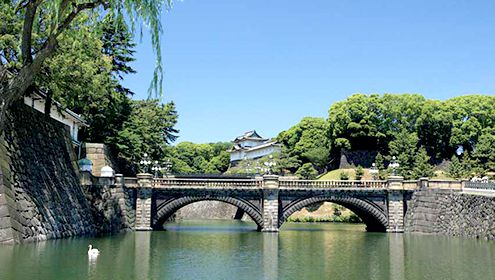
The Kokyo, or Imperial Palace is the Emperor's living quarters situated in the Chiyoda Ward of Tokyo. Tours of the grounds are conducted twice every day starting at 10:00 and 13:00. It is possible to participate in the tours by registering with the Imperial Household Agency. The tours are free, but are not held on Weekends, Public Holidays or from 7/21 - 8/31 or 12/28 - 1/4.
The most popular area of the outer gardens of the Imperial Palace is the Nijubashi bridge near the main gate. The view of the bridge with the Edo Castle Fushimi Yagura behind is a sight to behold.
The JR East Yurakucho Station is the closest station. By subway, the Tokyo Metro Chiyoda Line Nijubashi Mae Station, Mita Line Otemachi Station or Tozai Line Takebashi Station are closest.
Seasonal Recommend
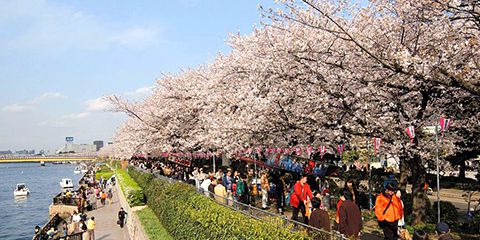
cherry blossom in tokyo
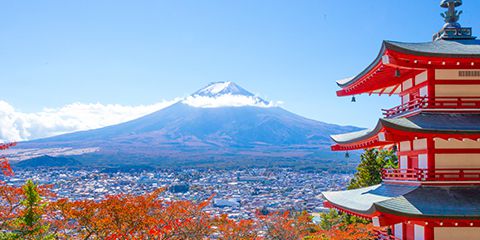
Tour Mt.FujiA registered World Heritage Site that draws tourists from all over the world. Although the climbing season is relatively short, bus tours and optional tours allow you to enjoy Mount Fuji's beautiful scenery all year round.
About Tokyo
No matter where you compare it to in the world, the everlasting wonder of Tokyo never seems to wither. The worlds top sightseeing destination has endless places to explore, from areas of class such as Ginza and Daikanyama, the birthplace of otaku culture Akihabara, the heavily competitive ramen market of Takadanobaba, to the homes of fashion Shinjuku, Harajuku, and Shibuya right to the traditional cityscape of Asakusa.
So everyone can enjoy the charms of Tokyo easily, let us introduce to you our many optional tours.
